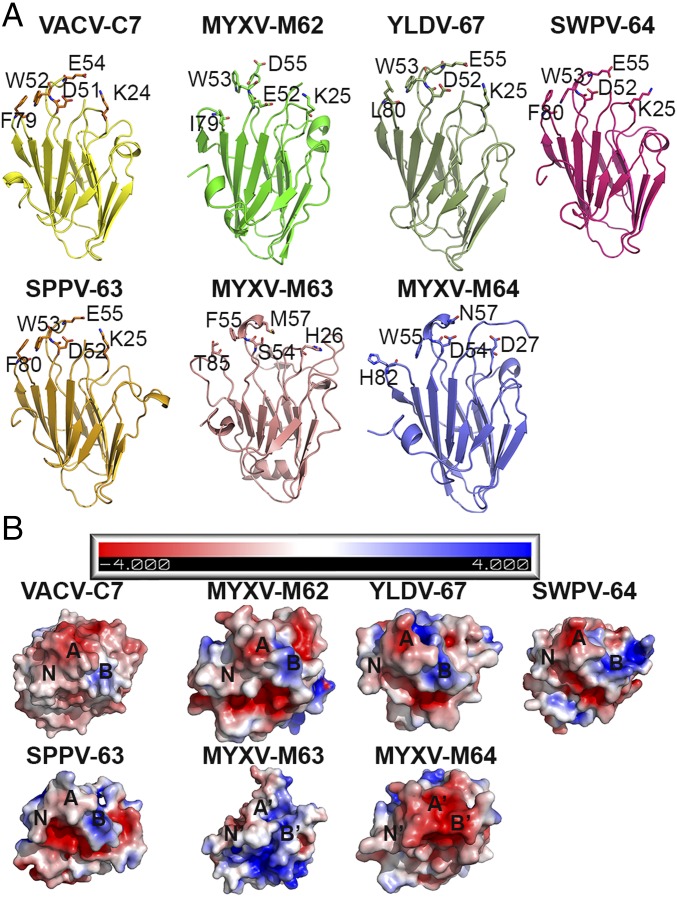Fig. 3.
The C7 family is related by a common protein fold but is distinguished by sequences at the molecular claws. (A) The crystal structures of VACV-C7, MYXV-M64, and the homology modeled structures of MYXV-M62, YLDV-67, SWPV-64, and SPPV-63 are shown in ribbon configuration. The homology models were generated by SWISS-Model interface (swissmodel.expasy.org) (37) using the crystal structure of C7 as the template. The conserved key residues of VACV-C7 and their corresponding residues in other homologs are shown as sticks. Notice that all C7 family members adopt a conserved β-sandwich fold but with substantial variations in the three functional loops (the molecular claw) between the C7 equivalents (VACV-C7, MYXV-M62, YLDV-67, SWPV-64, and SPPV-63) and the nonequivalent homologs (MYXV-M63 and MYXV-M64). (B) Electropotential surfaces of VACV-C7 and its homologs. The three loops are indicated as A (acidic), B (basic), and N (nonpolar). Notice that MYXV-M63 and MYXV-M64 display surface features that are drastically different from those of VACV-C7 and other functional equivalents.

